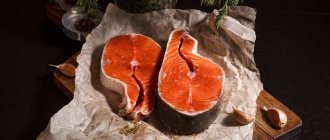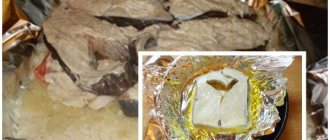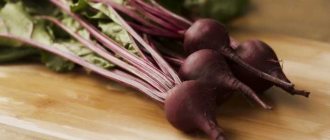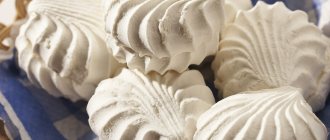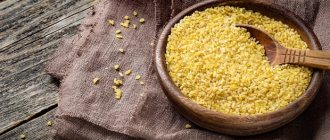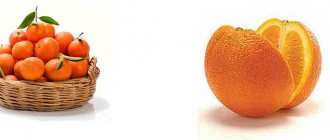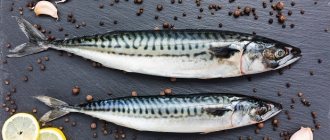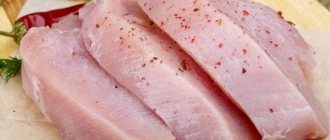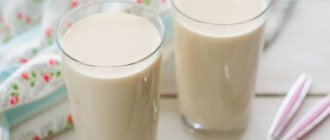Today you won’t surprise anyone with coconut; many are familiar with its taste. By the way, this is exactly a fruit - a drupe, not a nut, as everyone is accustomed to mistakenly believe. Malaysia is considered its homeland; coconuts also come to us from the Philippines, Thailand, Indonesia and Brazil.
Its use in everyday life is quite common. Coconut pulp is made into shavings and used in cooking, as a filling or to decorate desserts; the milk is used to prepare nutritious oil. But few people know about the limitless number of other beneficial properties and substances found in its composition.
What is a coconut
What is a coconut: is it a fruit or a nut? The coconut fruit does not fall into any of these categories. This is a drupe consisting of:
- exocarp or outer part;
- coir - fibers;
- endocarp or internal contents.
The drupe fruit is formed in apricots, plums, peaches and, oddly enough, in coconuts. The fruit of the coconut palm is formed by pulp (copra), which is a dense, edible layer of white color. Inside there is clear water or endosperm, which becomes cloudy as the fruit ripens.
The taste of coconut is sweet due to its high content of simple carbohydrates. The weight of the fetus is approaching 2.5 kg.
What do coconuts look like and where do they grow?
Coconuts grow on a palm tree, which belongs to the Palm family, formed by the only genus Cocos. The fruit is round or slightly oval, covered with a smooth green or yellow shell, reaching a diameter of 25-30 cm.
Palm coconuts look different from those fuzzy brown balls that we are used to seeing on our store shelves or in supermarkets. The palm tree grows for up to 100 years and annually produces up to 450 large, juicy and healthy drupes.
The tropics are the climate zone where coconuts grow. Coconut palms massively inhabit the coastal strip of the Malay Peninsula, Sri Lanka. They grow on the coasts of India and the Philippines, in Thailand, Vietnam and many other tropical countries. The production and processing of coconuts is actively carried out in Indonesia, from where the fruits are exported to different countries of the world.
The coke palm is surprising in that it chooses sea coasts to grow. The tree's root system is shallow and with its help it absorbs an abundance of moisture near the shore. A coconut that falls into the water can swim long distances and sprout on a new coastline. Salt water does not corrode the dense skin of the healthy drupe.
The first nuts covered with hard felt appeared in Russia from Indonesia, Brazil, Thailand and the Philippines. But there are Portuguese variations in the name. The word "soso" in the Portuguese understanding means "monkey". Indeed, three spots on the surface of the fruit look like a monkey's face.
What does coconut taste like?
Coconut is important in the diet for residents of many tropical countries living on the coast; it is consumed in all stages of ripening.
Unripe coconut contains pure, healthy, nutritious and tasty drink. It can be drunk directly from a natural vessel. They easily make a hole in the top of the nut - it saves you from thirst in the hot tropics.
The famous traveler Marco Polo wrote about the coconut drink: “A fresh and clear liquid like water is more aromatic and tastier than wine and any other drinks.”
Tourists love coconut for its refreshing, healthy and invigorating water. You can use a chipped piece of nut and choose the jelly-like pulp - soft, sweet and nutritious. For visitors to the coast, green coconuts are unusual, but for locals this nectar is a daily, valuable drink, especially when there is not enough drinking water.
Easy to include in your diet
Coconut flakes add a nice flavor to savory dishes. Coconut's meaty texture and flavor pair well with curries, fish stews, rice dishes, or even breaded shrimp.
Keep in mind that some brands contain added sugar, which may not be suitable for salty dishes. Be sure to check the ingredients label.
Shredded coconut is great for baking and adds a hint of natural sweetness and moisture to cookies and muffins.
Topping your oatmeal with raw coconut adds texture and tropical flavor. Added to pudding or yogurt, it is also a tasty calorie booster for those looking to gain weight.
Coconut flour is used in baking instead of wheat flour. It's gluten-free, nut-free, and a popular option for anyone counting carbs.
Because the flour is grain-free, it is also suitable for those following a paleo diet, which does not allow grain products such as regular wheat flour.
However, coconut flour is best used in tried and tested recipes as it will not work like wheat flour and will absorb more liquid than other flours.
Additionally, coconut oil is a delicious heat-resistant fat that can be used in baking, sautéing, or frying.
Summary:
Coconut is versatile in the kitchen and works well in both sweet and savory dishes. This is a great choice for those following a low-carb, paleo, gluten-free, or nut-free diet.
Calories and nutritional value
The paradox is that coconuts as a healthy food are included in various diets, despite its high nutritional value. The calorie content of coconut is approaching 362 kcal per 100 g of product. The dried fruit has a much higher energy value of coconut - 660 kcal per 100 g.
The glycemic index of the exotic is 45 units, which is average, causing a gradual increase in blood sugar levels. This beneficial quality allows carbohydrates to be absorbed gradually, without rapidly increasing their concentration in the bloodstream.
What does coconut treat and how to take it for medicinal purposes?
Coconut oil is widely used for medicinal purposes. It helps to get rid of discomfort after insect bites and heal wounds faster. It is added to tea when there is a sore throat. And if you rinse your mouth with water and oil, you can get rid of harmful bacteria and whiten your teeth.
Coconut oil helps relieve stress and quickly relax. To do this, rub a small amount of the product into your temples and scalp. Within just a few minutes, relief is felt. The oil is used to eliminate the manifestations of herpes; it also prevents wounds from spreading.
By consuming a small amount of oil daily, you can improve the functioning of the gastrointestinal tract, protect the heart muscle, and regulate cholesterol levels in the body. Regular consumption of oil promotes the healing of wounds on the gastric mucosa and reduces irritation.
The oil helps relieve nasal congestion and has a positive effect on the functioning of the thyroid gland.
Useful properties of coconut
All parts of the coconut have beneficial qualities. Sometimes the overall benefits are considered, but it is advisable to separately study the effects of coconut milk, coconut pulp and the benefits of coconut oil for the body. The properties of coconut help maintain human health and have a positive effect on residents of southern and northern latitudes, which makes the exotic one of the “cosmopolitan” varieties. It is readily purchased by different countries, since the beneficial qualities of the fruit far outweigh its harm.
Benefits of coconut milk
Coconut milk is made from the pulp of the ripened nut. As a result of squeezing the fruit pulp, a thick white mass is obtained - this is coconut milk. Knowing the composition of coconut milk, its benefits and harm to the body, you can safely try an exotic product. It is a thick liquid with a sweetish taste. It is used as a drink and added to baked goods and desserts.
The beneficial properties of coconut milk help with the following health problems:
- Thanks to the improvement of intestinal microflora, they stabilize the functioning of the digestive tract and allow food to be digested faster.
- Normalizes metabolic processes by removing toxins and various breakdown products.
- Prevents gastritis, stomach ulcers and vitamin deficiency when used as a prophylactic.
- They compact the structure of vascular cells, reducing the risks of thrombosis and atherosclerosis.
- They rejuvenate cells, giving beauty to the appearance.
- They stand guard over chronic fatigue, maintaining a stable psychological state.
- During cold infections, they are useful for removing mucus from the lungs and bronchi.
- Urinary tract diseases occur more easily and without complications.
A young coconut contains water inside. It differs from milk in calorie content and composition, and has a sweet and sour taste. The beneficial properties of such water are its ability to regulate the body’s water balance and fight urinary tract infections. Water in its composition resembles saline solution.
Benefits of coconut pulp
If an exotic fruit is consumed not from time to time, but introduced into the diet, then when eating healthy pulp, the following changes in the body are possible:
- improving the quality of vision;
- high-quality functioning of the digestive organs;
- strengthening the protective immune barrier.
Types of Coconut Products
The raw white flesh inside the coconut is called the kernel. It has a firm texture and a pleasant, slightly sweet taste (2).
If you have a whole coconut, you can remove the raw meat from the shell and eat it. In its processed form, you can usually find it chopped, grated, or as flour (2, 3).
Coconut milk and cream are prepared by squeezing the raw, grated flesh (2, 3).
Dried coconut meat is usually ground and used in cooking or baking. It can also be processed and ground into flour (2, 3).
Coconut oil is also extracted from the pulp (2, 3, 4).
Summary:
Coconut meat has a pleasant, slightly sweet flavor and you can enjoy it raw or dried. It produces many related products, including coconut milk, cream and butter.
Benefits of coconut for women
Coconut drupes are useful for the female body in difficult situations:
- Due to the cosmetic effect, the complexion improves and the hair structure is restored.
- Helps normalize the menstrual cycle: reduce pain, improve psychological state. Fights fungal infections.
- It is a preventative against breast cancer.
- Promotes recovery after birth injuries: removes stretch marks and lightens pigmentation.
Coconut is useful for older women, delaying menopause and improving the functioning of the genitourinary system, which is important during the aging period of the reproductive system.
Due to the beneficial properties of milk, water, and pulp in the fruit, its use in cosmetology is justified. Coconut components are included in useful creams, masks, shampoos and rinses for dry skin and brittle hair.
During pregnancy
Coconut is not capable of causing harm during pregnancy, which has been proven by numerous studies and tested in practice. It replenishes the body with useful vitamin and mineral components and at the same time enriches it with fluid.
Water and milk in a beneficial composition relieve signs of toxicosis in the first trimester of pregnancy, which brings relief to women. Harm from heartburn, nausea, and vomiting is minimized, which is associated with the use of exotics. Coconut during pregnancy has a beneficial effect on the gastrointestinal tract and is useful for problems with constipation, which women usually suffer on the eve of childbirth. A glass of coconut milk a day during pregnancy is beneficial and important support for the body.
Coconut while breastfeeding
The drupe fruit is a nutritious product and the question of coconut: benefits and harm to the body during lactation is not idle. The tropical fruit is useful for a nursing mother and baby, as it enriches milk with a whole range of essential nutrients. Thanks to its high nutritional value, it allows the child to grow faster, becoming healthy and strong.
In case of hepatitis B, it is beneficial due to its antiviral activity, raising the immune status. Helps in the fight against numerous infections. Improves and stabilizes the functioning of the central nervous system.
Where are coconuts used?
The flakes and pulp, both fresh and dried, are used in cooking. Dishes with them, if consumed regularly, normalize metabolic processes. They allow you to get a good energy boost, but without excess fat.
Coconut flakes are also added to food. It has antiviral and antifungal effects, strengthens the immune system, and removes toxins from the intestines. It is used in baked goods, snacks, salads, puddings and cereals. Various sauces, desserts, sweets, drinks and soups are prepared from coconut milk.
Cooking is not the only area where coconut is used. The fibers that cover the outside of the fruit are used to make strong ropes and ropes, as well as brushes, carpets and other household items, and produce a variety of building materials. Coconut shells are used to make dishes, toys, souvenirs, and musical instruments.
Galileo. Coconut
At what age can you give coconut to children?
The coconut fruit is not a particularly allergenic product, but the child’s stomach may refuse to digest the exotic product. It is recommended to give coconut to children from 1.5-2 years of age. It can cause harm at this age if the child is susceptible to new foods. In this case, the period for taking coconut fruit should be postponed and tried from 3 years.
The benefit of coconut for the baby’s body is that it contains calcium, which is important for the growth of the skeletal system. A complex of vitamins and minerals helps the child’s development, and the gentle oil is useful in caring for the child’s skin.
Harmful qualities of the product

There aren't many downsides to coconut. These are mainly allergic reactions of the body or individual intolerance of the fetus. It can cause harm to people who have a “weak stomach”; they should be careful in consuming coconut oil and milk due to the high fat content of coconut. Otherwise, you can provoke the appearance of pancreatitis, cholecystitis, inflammation of the stomach, intestines and liver.
For the same reason, it is not recommended to consume coconut in any form for people prone to obesity and diarrhea.
The exotic fruit is increasingly gaining popularity in Russian markets, it has found application in all areas of life, and it benefits the entire body as a whole. Just a few decades ago, coconut was considered simply an overseas curiosity. Today it is replete with many recipes, cosmetics, diets and medications.
The benefits and harms of coconut for weight loss
The pulp of the fruit contains lauric acid, the main source of fat burning. She helps:
- partially break down excess fat deposits;
- improve the course of digestive transformations;
- strengthen metabolic processes;
- minimize the feeling of hunger.
The calorie content of coconut reduces hunger, and fiber helps remove excess feces due to active intestinal motility. Metabolism proceeds faster and fat does not have time to be deposited, being consumed as a source of energy, which is useful for stabilizing weight.
Not all obese people are recommended to take an exotic product. The fruit can cause harm by increasing cholesterol levels and disrupting the functioning of the cardiovascular system. Under the influence of excess coconut oil, other pathologies also develop.
Are there any contraindications to eating coconuts?
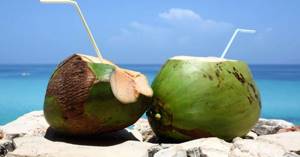
The fruit does not cause any harm, but in some people it can cause individual intolerance. Those who are prone to allergies should be careful when trying coconut for the first time.
Regarding how much coconut you can eat, there are also some nuances here. People who quickly gain weight or suffer from stomach disorders are not recommended to indulge in exotic delicacies.
The use of coconut in cosmetology
Despite its excellent composition, only oil from this nut is used in cosmetology. But this oil is suitable for hair, nails and skin. Oil is added to natural soap. Main properties of the oil:
- hydration;
- giving elasticity to the skin;
- restoration of healthy hair structure;
- getting rid of fragility and delamination;
- normalization of fat balance in both hair and skin;
- strengthening the nail plate.
The oil protects the skin from negative atmospheric influences. It is added to tanning products. It has pronounced whitening properties.
Areas of use
Do you want to have powerful and beautiful legs? Read on to learn how to squat with a barbell correctly.
Instructions on how to breathe correctly when running.
Creatine: how to take and side effects! https://stroy-telo.com/dieta/sportivnoe-pitanie/kak-prinimat-kreatin-osnovnye-svedeniya-i-zabluzhdeniya.html
Fresh or dried fruit pulp, as well as flakes, are used for food. Regular consumption of products with coconut pulp normalizes metabolism. Coconut gives you a boost of energy without excess fat. Coconut flakes and dishes with them strengthen the immune system and provide good protection against viral and fungal infections. Coconut flakes cleanse the intestines of toxins.
It is added to:
The presence of healthy fats makes the fruit a good helper in the fight against atherosclerosis
- salads;
- baking;
- porridge;
- snacks;
- puddings.
Prepared from coconut milk:
- soups;
- sauces;
- beverages;
- sweet dishes;
- Dessert.
But the benefits of coconut are not limited to the fields of cooking, medicine and cosmetics. The fibers found on the hard shell (coir) are used to make strong ropes, ropes, carpets, brushes and other household items and building materials. Various souvenirs, toys, dishes and even musical instruments are made from the shell itself.
For cosmetic purposes
Coconut milk is useful for internal and external use (masks and lotions). Together with glucose, coconut milk is used in medicine for intravenous injections. This solution has an effect on dehydration by maintaining the desired fluid level.
Its exceptional benefits for the skin are manifested in the fact that it tones and refreshes it. Makes dull and aging skin elastic. Treating acne and allergic rashes with coconut milk gives excellent results. It dries and soothes inflamed skin.
Coconut oil
The oil is obtained by cold pressing dried coconut meat.
It is actively used in cosmetic procedures. After its external use, the appearance becomes more attractive.
Coconut oil is simply irreplaceable if the skin is dry, cracked and red. Due to the presence of saturated fatty acids in it, it is quickly absorbed, moisturizes the skin and makes it velvety.
Coconut oil is effective for all types of burns (including sunburn). Dull, split ends from the effects of this product become healthy and shiny.
In addition, coconut oil is a valuable dietary product. The presence of lauric acid in it means protection against pathogenic microorganisms, yeast, bacteria, viruses, fungi. Capric acid stimulates antimicrobial activity. Coconut oil is easy on the liver because it is easy to digest and promotes healthy intestinal flora.
Delicious recipes
First of all, the coconut must be opened. To do this you will have to arm yourself with a knife and a hammer:
- Using the tip of a knife, make a hole in one of the three eyes, which will be softer than the others.
- Drain the liquid and drink immediately; it does not keep for long.
- Using a hammer, start tapping the perimeter, turning the fruit.
- After a couple of laps, the shell will crack.
- Now it can be easily removed by simply pulling it to the sides. If you're lucky, the pulp will remain intact.
Now you can start cooking.
Recipe No. 1 “Three in one”
From one coconut you can get three useful products at once:
- Grind the pulp using a blender or grater.
- Fill the resulting shavings with warm water.
- Leave for a while until completely cooled.
- Remember to masher the pulp. Don't beat it!
- After three to four hours, strain the mixture. The shavings can be dried.
- Place the liquid in the refrigerator for several hours.
- Make a hole in the solidified oil and carefully drain the bottom layer of liquid.
- Collect the oil in a separate container.
Thus, from one fruit you can get about 50 g of butter, a glass of whey (low-concentrated milk) and a whole “mountain” of fresh aromatic shavings.
Recipe No. 2 “Vitamin Raffaello”
The remaining shavings are perfect for this dessert.
Ingredients:
- a mixture of any nuts and coconut flakes (in any proportion) – 250 grams;
- medium-sized bananas - 1.5 pieces;
- dates – 20 pieces;
- coconut shavings for the top layer - 1 cup.
Cooking process:
- Grind the coconut-nut mixture into flour or very fine crumbs using a blender or meat grinder (croll several times).
- Grind the dates (removing the pits) and bananas to a paste. Half a banana can be replaced with some other soft fruits (apricots, peaches, mangoes, etc.).
- If the mass is too thick, add a little water or juice.
- Mix it with nut flour.
- Roll the resulting dough into balls (to reduce stickiness, grease your hands with coconut oil).
- Sprinkle shavings on top.
- Place the finished sweets in the refrigerator for three to four hours.
This dessert turns out to be very satisfying and no less healthy. For greater originality, you can place a small whole nut or berry in the center of each ball.
Recipe No. 3 “Lazy coconut oatmeal” without cooking
This recipe will help diversify your usual breakfast.
Ingredients:
- oatmeal (which takes 20 minutes to cook) – 2 tbsp. spoons;
- coconut milk – 1 glass;
- honey (maple syrup) – 2 teaspoons;
- berries (raspberries, strawberries, blueberries, etc.) – 2 handfuls;
- coconut shavings - for decoration.
Cooking process:
- Pour milk over the cereal and mix well. You can use ready-made coconut milk, or you can make your own. To do this, beat the pulp of one coconut with a blender with 300 - 400 ml of warm water and strain.
- Add berries and sweetener to taste.
- Transfer the thoroughly mixed mass into a sealed container and leave in the refrigerator for several hours, or better yet, overnight.
- In the morning (or after the required time has passed), take out the prepared breakfast, decorate it with coconut flakes and enjoy the surprisingly delicate taste of the exotic delicacy.
This recipe can be varied by adding poppy seeds, sesame seeds, chia seeds, nuts, or dried fruits. It is not recommended to use sugar, condensed milk and other similar products as a sweetener, because... this will make the porridge much less healthy.
Brief summary
- According to the data presented above, we can conclude that the benefits of coconut are undeniable for external and internal use, and the high calorie content of the product requires control of the amount consumed.
- It is worth distinguishing between juice, milk, butter, dried fruits, and milk powder - these are modifications obtained from fresh pulp.
- Coconut juice and milk are often mistakenly identified - the former can be extracted by cutting the drupe, the latter is a by-product of preparing the oil.
- A powerful tool for preserving the youth of the epidermis and the health of the hair shafts is coconut oil, which can act as a component of a home or purchased product.
- The product, compared to animal milk, has no cholesterol, so butter has a lower risk of developing mutations in subsequent generations compared to butter, so it can be used for frying.
- The list of contraindications includes individual intolerance, children under three years of age, ulcers and gastritis during periods of exacerbation. Pregnant women should use with the permission of a doctor.
Can you lose weight by eating coconuts?
Despite the fact that coconut pulp has a high calorie content, many diets are also based on this product. After all, the most important principle of proper nutrition is that you can eat what you want, only in moderation.
The nutritional value of coconut is incomparably high. It is not for nothing that on the islands in the Pacific Ocean the coconut is a symbol of life. Modern fashionistas use it in their diets. One of the strictest is as follows. Select a large coconut, scoop out the flesh and grate it. Divide the resulting mass into five equal parts. This will be your daily diet. Eat one piece every 3-4 hours. You can drink green tea without sugar. One fasting day will be enough.
You can also take this product with you as a replacement for sandwiches to work. By eating a small piece of coconut, you will overcome the desire to eat something even more high-calorie. You can prepare “coconut portions” in advance and carry them with you in your purse.
In addition, the calories in coconut can be combined with other products that minimize their amount. Make a real vitamin bomb! To do this you need coconut, orange, carrots, banana. All ingredients should be taken in approximately equal quantities and chopped in a convenient way: using a knife, grater, or food processor. Afterwards you need to mix them and you can eat them. But no later than two hours before bedtime.
In addition to fruits, coconut is also combined with vegetables. For example, with beets, cabbage, pumpkin. Mix these products, add a little grated coconut and you will have an excellent vitamin salad. It will not only maintain your figure, but also give the body a great boost of energy.
Let this article about the beneficial properties and calorie content of coconut help you in organizing proper nutrition, which is an essential component of a healthy lifestyle. Learn to properly use what nature gives us and your life will significantly change for the better. You can debate for a long time whether coconut is high in calories, but it’s better to just try it and start creating unusual, tasty and healthy dishes.
